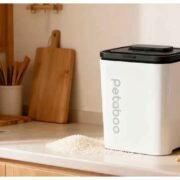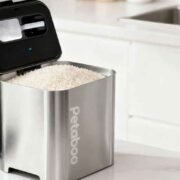Plastics are a type of semi-synthetic material with organic polymers as the main content. The term plastic was derived from ‘Plastikos’ in Greek, meaning ‘to mould’.Polymers of long-chain carbon are called plastic. Polymers of high molecular weight are typically plastics, and to improve performance and cost reduction, they may contain other substances.
Some plastics can be recycled. The most versatile materials on earth are said to be plastics. Plastic material properties like plasticity make them pressed, moulded or extruded into various shapes. Natural gas or petroleum are used to derive modern plastics. Human industrial systems are used to make plastics.
Plastics are found in toys, clothes, screens, industrial and medical equipment etc. There are different types of plastics depending on their benefits and properties.
Properties of Plastics
Let us now see some Physical and Chemical Properties of Plastic.
- Moulding into various shapes and sizes is easy.
- Conduction of heat and electricity is poor in plastics.
- Plastics are ductile and strong.
- They are resistant to many chemicals and corrosion-resistant, and also shock resistant.
- The cost for processing is very low.
- Low thermal conductivity and have low toxicity.
- Plastics are chemically stable and very light in weight.
- They do not rust easily due to good impact resistance.
- The dimensional stability is very poor and can be easily moulded.
Types of Plastics
High-performance plastics, Engineering plastics, Commodity plastics and Standard plastics are a broad classification of plastics. Also, there are two different categories of plastics based on physical properties:
1. Thermoplastics:
When subjected to high temperatures, these do not undergo any chemical changes in properties. When exposed to high heat conditions, these plastics do not undergo any chemical composition and structure changes.
Remoulding these plastics multiple times and changing them into a soft state is easy. Also, these plastics can be recycled or reshaped. Cross-linked polymers, linear polymers and the combination of both are thermoplastic.
Examples: Nylon, Acrylic, Teflon, Polystyrene, PVC, Polyethylene etc.
2. Polyethylene:
Also called Polythene, used in packaging. To make containers, bottles, bags etc., polyethylene is commonly used. This is a type of commodity plastic. The monomer of polyethylene is ethylene with the formula C2H4.
Structure of Polyethylene
The ethylene is obtained by cracking ethane, a major component of natural gas and a gaseous hydrocarbon. A double bond between carbon atoms links two methylene units, CH2, to produce ethylene molecules which CH2=CH2 can represent.
Multiple units of ethylene can be produced by polymerisation catalysts, breaking the double bond. Repeating multiple times in a single molecule is the key feature of polyethylene.
Properties of Polyethylene
- When kept under a persistent force, they exhibit strong creep.
- When compared to other plastics, mechanical strength is low.
- It is very light and versatile.
- They possess good insulation properties.
- The melting point is low, from 115 to 135 degrees celsius.
- The range from 0.88 to 0.96 grams per cubic centimetre is the density of polyethylene.
- The hardness and the strength of this polymer are low.
Types of Polyethylene
Based on the degree of branching in structure and plastic density, there are different types of polyethylene. Different types of polyethylene exhibit different melting points and mechanical properties.
- HDPE (High-density polyethylene)
- MDPE (Medium-density polyethylene)
- XLPE (Cross-linked polyethylene)
- LDPE (Low-density polyethylene)
- HDXLPE (High-density cross-linked polyethylene)
Uses of Polyethylene:
- Used in making consumer plastic items and packaging products.
- Used for coating cables, due to its good conduction of electricity
- HDPE is used for manufacturing water pipes with different capacities and industrial fabrics.
- LDPE is used in the production of cling films.
3. PolyVinyl chloride (PVC)
It is a synthetic polymer having a monomer as vinyl chloride. Across the globe, more than 30 million tons of this plastic are produced. Rigid PVC and flexible PVC are the two basic forms. The range from 100 to 260 degrees celsius is the melting point of PVC.
Uses of PVC:
- Rigid PVC is used in packaging, bank cards, and food covering sheets, also used indoors, piping and windows in the construction industry.
- Flexible PVC is used for flooring, plumbing, insulation of electrical cables etc.
Thermosetting:
Once moulded and bent, the thermosetting plastics cannot be softened again by heating. Only once they can be moulded. The category of thermosetting plastics is heavily cross-linked polymers.
When exposed to large amounts of heat, these plastics become damaged and undergo degradation.
Examples: Melamine, Bakelite, vulcanized rubber, epoxy resin, polyurethane, polyester etc.
Properties of thermosetting plastics:
- During the moulding process, they get hardened, and they cannot be softened after solidifying.
- In most of the inorganic solvents, the thermoset resins are insoluble.
- They are brittle, and if heat is applied for a prolonged time, they are burned.
- If the temperatures are set high, the 3-dimensional cross-link structure will be retained in its strength.
- They have high levels of dimensional stability.
- They have a flexible design and are cost-effective.
4. Polyurethane
It is an organic polymer that features many organic units linked by urethane molecules. Most of the polyurethanes are thermosetting polymers, but some specific types of polyurethane possess thermoplastic features.
They are alternating copolymers since they feature two types of monomers. For the production of polyurethane, two monomers, i.e. polyols and isocyanates, are used, and they usually contain 2 functional groups in every molecule.
Uses of Polyurethane:
- Used in production of foams which are used in refrigerator sheets, domestic furniture etc.
- Also used in garments.
- Used in the manufacturing of bathroom, kitchen sponges, couches and seat cushions.
Recycling of Plastic:
Plastics become a source of pollution if not recycled properly with utmost care. If not taken precaution at a proper time and not recycled, it will get mixed with other materials or chemicals, causing a problem.
Hence, recycling plastic is of utmost importance. Microbial activities do not easily decompose plastics since they are non-biodegradable. Polymers or biodegradable polymers are used to avoid this.
Uses of plastics
- In packaging materials
- Construction field(door, windows, pipes, etc.)
- Textiles( fabrics, fleece, etc.)
- Consumer-friendly goods(children toys, toothbrushes, chairs, tables, etc.).
- Electronics(computers, mobile phones, televisions, etc.)
- Transportation (bumpers, body panels, mirrors, etc.).
Conclusion
Plastics have many benefits, and without plastic, modern society would indeed look very different. The manufacturing process being simple and with numerous physical and chemical properties, plastics are found in various applications.












